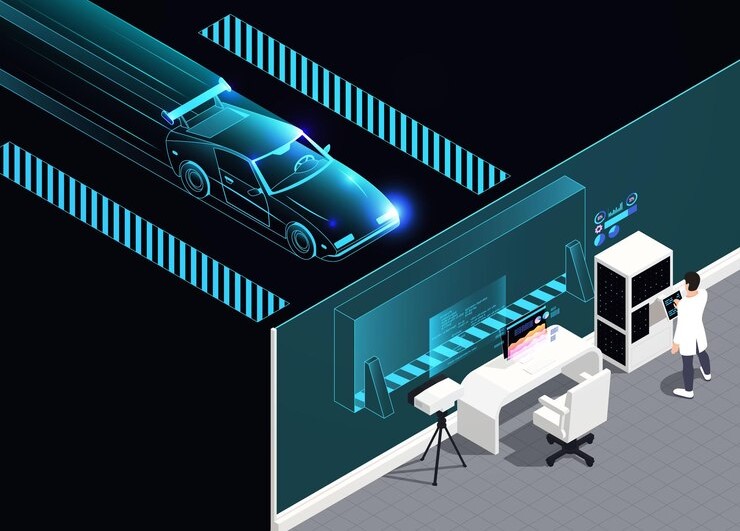Objective
In the competitive automotive industry, quality is prime. Manufacturers face a key challenge. They must detect surface defects, like dents and scratches, on vehicles during production. Traditional manual inspection methods, while effective, are time-consuming and prone to human error. This project aimed to use AI to automate defect detection. It would make quality control on the conveyor belt faster and more accurate.

Solution
To solve this, we built an AI-based system to detect dents and scratches. It is integrated into the production conveyor belt. This system uses advanced computer vision and machine learning. It continuously monitors vehicles as they move along the conveyor belt.
Key Features of the Solution
High-Resolution Image Capture
The system is equipped with high-resolution cameras strategically placed along the conveyor belt. These cameras capture detailed images of the vehicle's surface from multiple angles. This ensures full coverage.
Real-Time Image Processing
The AI system immediately processes the captured images. It uses advanced algorithms to spot any texture changes. The AI is trained on a vast dataset of vehicle images. It can now tell minor cosmetic flaws from major defects.
Defect Classification
Once a defect is detected, the AI system classifies it as either a dent or a scratch. The classification process is crucial. It decides the next steps in the production line. A minor scratch might be fixed later. A dent needs immediate attention.
Automated Reporting and Alerts
The system is integrated with the manufacturing unit's central control system. When a defect is found, an automated report is generated. It details the defect's nature and location. Alerts are sent to the relevant personnel, allowing for quick action without disrupting production.
Continuous Learning and Improvement
The AI system is designed to improve over time. As it processes more images and finds more defects, it keeps refining its algorithms. It becomes better at detecting even the subtlest flaws.
Outcome
The AI-based dent and scratch detection system greatly improved vehicle manufacturing.
Enhanced Quality Control
The AI system was more consistent and accurate than manual inspections. Every vehicle that passed through the line faced the same, rigorous checks. These checks ensured that defects were found early.
Reduced Manual Inspection Time
Automating defect detection cut the time spent on manual inspections. It sped up production. Vehicles could move through quality control faster.
Improved Defect Detection Accuracy
With the AI system, the accuracy of defect detection improved significantly. The system found defects that human inspectors might have missed. This was especially true for small defects in hard-to-see areas of the vehicle.
Cost Savings
Cost savings for the manufacturing unit came from two things. First, a reduction in manual inspection time. Second, the early detection of defects. Identifying defects earlier in production minimized costly rework.
The AI dent and scratch detection system greatly improved the factory. It improved both efficiency and product quality. This case study shows that AI can revolutionize manufacturing. It can set new standards for quality control in the automotive industry.